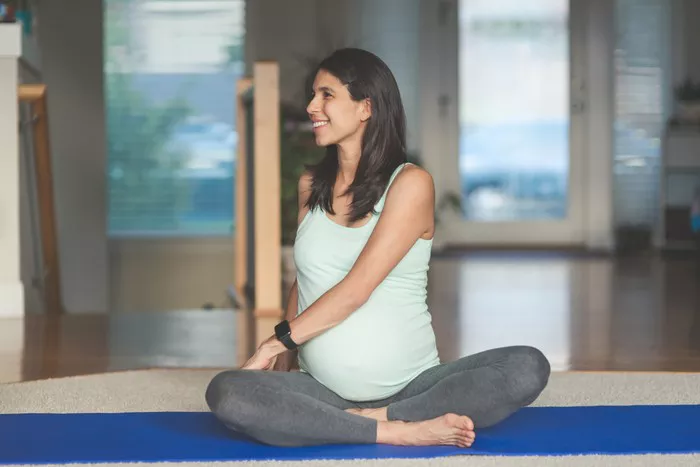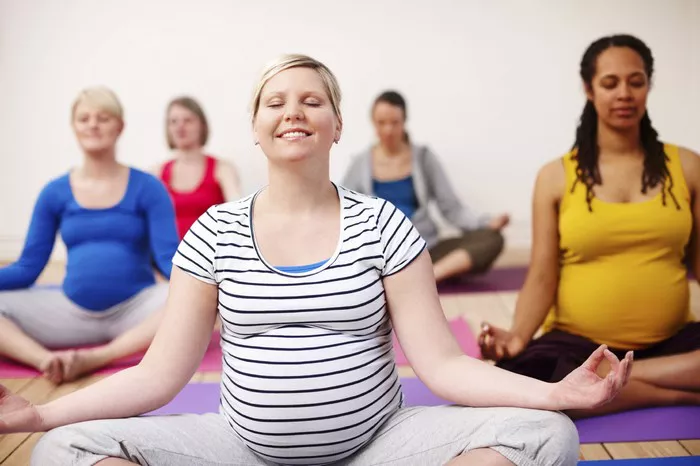Ashtanga Yoga is known for its structured and systematic approach, with a series of fixed sequences at its core. These sequences are not random asanas thrown together, but are carefully designed to improve the practitioner’s physical, mental and spiritual levels. These sequences are designed to warm the body, detoxify through sweating, and build strength, flexibility and endurance over time. Each pose in the sequence has a specific arrangement and function that contributes to the practitioner’s overall development. This article will explore in detail how many types of Ashtanga Yoga there are?
The Primary Series: A Gateway to Transformation
The Primary Series, also known as “Yoga Chikitsa,” is often the starting point for most Ashtanga practitioners. This series focuses on opening the hips, shoulders, and spine while strengthening the core and improving overall flexibility. It contains a series of standing postures, forward folds, backbends, twists, and inversions that work together to create a balanced and comprehensive practice.
Standing Poses: Building Strength from the Ground Up
The standing postures in the Primary Series, such as Trikonasana (Triangle Pose), Virabhadrasana I – III (Warrior Poses), and Parivrtta Trikonasana (Revolved Triangle Pose), form the foundation of the practice. These poses strengthen the legs, ankles, and feet, while also engaging the core muscles. They help improve balance, stability, and body awareness, teaching the practitioner to root down into the earth and rise up with strength and grace.
Forward Folds: Unwinding the Body and Mind
Forward folds, like Paschimottanasana (Seated Forward Bend) and Janu Sirsasana (Head – to – Knee Pose), are an essential part of the Primary Series. These postures stretch the hamstrings, calves, and lower back, while also compressing the abdominal organs. They have a calming effect on the nervous system, helping to relieve stress and anxiety. By folding forward, practitioners learn to release tension and surrender into the pose, cultivating a sense of inner peace.
Backbends: Opening the Heart and Expanding Energy
Backbends in the Primary Series, such as Ustrasana (Camel Pose) and Dhanurasana (Bow Pose), open the front of the body, expand the chest, and stimulate the heart and lungs. These poses strengthen the back muscles, improve posture, and increase energy flow throughout the body. Backbends also help to counteract the effects of sitting and hunching, promoting a more open and upright stance.
Twists: Wringing Out Toxins and Balancing the Body
Twists, like Ardha Matsyendrasana (Half Lord of the Fishes Pose), play a crucial role in the Primary Series. They help to detoxify the body by squeezing and releasing the internal organs, promoting digestion and elimination. Twists also balance the nervous system, improve spinal mobility, and create a sense of harmony within the body.
Inversions: Reversing the Flow and Rejuvenating the Mind
Inversions, such as Sarvangasana (Shoulderstand) and Sirsasana (Headstand), are the final postures in the Primary Series. These poses reverse the flow of blood and energy, promoting circulation and rejuvenation. Inversions also have a calming effect on the mind, reducing stress and anxiety. They require strength, balance, and concentration, making them a challenging but rewarding part of the practice.
The Intermediate Series: Deepening the Practice and Unleashing Inner Potential
The Intermediate Series, or “Nadi Shodhana,” focuses on purifying the energy channels (nadis) of the body and awakening the latent energy within. This series is more advanced than the Primary Series and requires a certain level of strength, flexibility, and experience. It contains a series of more complex postures, including advanced backbends, twists, and inversions, that challenge the practitioner’s physical and mental limits.
Advanced Backbends: Pushing the Boundaries of Flexibility and Strength
The advanced backbends in the Intermediate Series, such as Urdhva Dhanurasana (Upward Bow Pose) and Kapotasana (Pigeon Pose), are some of the most challenging postures in Ashtanga Yoga. These poses require extreme flexibility in the spine, shoulders, and hips, as well as significant strength in the back and core muscles. They open the heart, expand the chest, and release stored tension and emotions, allowing the practitioner to connect with their inner self on a deeper level.
Intense Twists: Balancing the Nervous System and Enhancing Detoxification
The twists in the Intermediate Series are more intense than those in the Primary Series. They target the deeper layers of the muscles and connective tissues, helping to release tension and improve spinal mobility. These twists also stimulate the internal organs, enhancing digestion and detoxification. By twisting the body, practitioners learn to balance the left and right sides of the brain, promoting mental clarity and focus.
Advanced Inversions: Cultivating Inner Stillness and Spiritual Growth
The advanced inversions in the Intermediate Series, such as Vrischikasana (Scorpion Pose) and Eka Pada Sirsasana (One – Legged Headstand), require a high level of strength, balance, and concentration. These poses not only reverse the flow of blood and energy but also cultivate inner stillness and spiritual growth. They challenge the practitioner to overcome fear and self – doubt, developing a sense of courage and determination.
The Advanced Series: A Path to Mastery and Self – Realization
The Advanced Series is divided into three parts: Advanced A, Advanced B, and Advanced C. These series are the most challenging and are reserved for highly experienced practitioners who have mastered the Primary and Intermediate Series. The Advanced Series contains a series of extremely difficult postures that require a high level of physical and mental discipline, as well as a deep understanding of yoga philosophy and practice.
Advanced A: Refining the Practice and Deepening the Connection
Advanced A focuses on refining the postures and movements learned in the previous series. It contains a series of complex backbends, twists, and inversions that require a high level of precision and control. This series helps the practitioner to deepen their connection with the body, mind, and spirit, and to develop a greater sense of self – awareness and inner peace.
Advanced B: Transcending Limitations and Embracing the Unknown
Advanced B takes the practice to a new level, introducing more challenging postures and sequences that push the boundaries of what is possible. This series requires a high level of strength, flexibility, and endurance, as well as a willingness to embrace the unknown and overcome fear. Advanced B helps the practitioner to transcend their limitations and to realize their full potential.
Advanced C: The Ultimate Challenge and the Journey to Enlightenment
Advanced C is the most difficult of the Advanced Series. It contains a series of postures that are considered to be the pinnacle of Ashtanga Yoga practice. This series requires a lifetime of dedication and practice, as well as a deep spiritual commitment. Advanced C represents the ultimate challenge and the journey to enlightenment, where the practitioner transcends the physical body and connects with the divine.
Ashtanga Yoga Variations: Adapting the Practice to Individual Needs
While the traditional Ashtanga sequences provide a solid foundation, there are also variations and modifications that can be made to suit the individual needs and abilities of the practitioner. These variations can include using props, modifying postures, or adjusting the sequence to accommodate injuries, health conditions, or personal preferences.
Props: Aids to Support and Enhance the Practice
Props such as blocks, straps, bolsters, and blankets can be used to support the body in postures, making them more accessible and comfortable. Props can help beginners to learn the correct alignment and form of postures, while also providing support for more experienced practitioners who may be working on advanced postures. They can also be used to modify postures for injuries or health conditions, allowing the practitioner to continue their practice safely.
Modified Postures: Tailoring the Practice to Your Body
Postures can be modified in many ways to suit the individual needs of the practitioner. For example, a forward fold can be modified by bending the knees or using a prop to support the torso. A backbend can be modified by using a wall or a prop to support the body. These modifications allow the practitioner to adapt the practice to their body’s limitations and abilities, while still reaping the benefits of the postures.
Adjusting the Sequence: Customizing the Practice for Your Goals
The Ashtanga sequence can also be adjusted to suit the individual goals and needs of the practitioner. For example, if a practitioner is focusing on improving flexibility, they may choose to spend more time on forward folds and hip – opening postures. If a practitioner is focusing on building strength, they may choose to spend more time on standing postures and backbends. By adjusting the sequence, the practitioner can customize the practice to meet their specific goals and needs.
Conclusion
In conclusion, Ashtanga Yoga offering a multitude of sequences, postures, and variations to suit the needs and abilities of every practitioner.Whether you are a beginner just starting your yoga journey or an experienced practitioner seeking to deepen your practice, Ashtanga Yoga has something to offer. By understanding the different sequences, postures, and variations, and by listening to your body’s needs, you can create a practice that is both challenging and rewarding.























